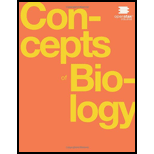
Figure 16.2 When bacteria are destroyed by leukocytes, pyrogens are released into the blood. Pyrogens reset the body’s thermostat to a higher temperature, resulting in fever. How might pyrogens cause the body temperature to rise?

To determine:
The cause of rise in body temperature due to pyrogens.
Introduction:
Pyrogens are the polypeptides that are responsible for increasing the body temperatures, by causing metabolic changes in the body. They can be endogenous or exogenous. The exogenous pyrogens are produced by the cells found in animal body, such as macrophages. The endogenous pyrogens are produced by the infectious organism, such as bacteria.
Explanation of Solution
Fever is the rise in body temperature due to infection. Presence of pyrogens in the blood stream leads to the fever. When an infection attacks the body, then it is combated by the immune system of the body. During this process pyrogens are released. These pyrogens then travel to the hypothalamus via the bloodstream. The hypothalamus is present in the brain and regulates the body temperature. The pyrogens bind to the receptors on the hypothalamus, leading to rise in body temperature. This high temperature of the body opposes the survival of infection causing bacteria.
The most common pyrogen is interleukin-1, which is produced by the WBCs. WBCs when bind to the certain bacteria and viruses, are termed as the macrophages. The main purpose of IL-1 is to signal the T-helper cells to come in action.
The pyrogens rises the body temperature by binding to the receptors on the hypothalamus.
Want to see more full solutions like this?
Chapter 16 Solutions
Concepts of Biology
Additional Science Textbook Solutions
Biological Science (6th Edition)
Human Anatomy & Physiology (2nd Edition)
Campbell Essential Biology (7th Edition)
Applications and Investigations in Earth Science (9th Edition)
Campbell Biology (11th Edition)
Introductory Chemistry (6th Edition)
- Which marker does this DNA 5ʹ AATTGGCAATTGGCAATTGGCAATTGGCAATTGGCAATTGGCAATTGGC 3ʹ show?arrow_forwardThe Z value of LOD for two genes is 4, what does it mean for linkage and inheritance?arrow_forwardBiology How will you make a 50-ul reaction mixture with 2uM primer DNA using 10 uM primer DNA stocksolution and water?arrow_forward
- Biology You’re going to make 1% (w/v) agarose gel in 0.5XTBE buffer 100 ml. How much agarose are you goingto add to 100 ml of buffer? The volume of agaroseis negligible.arrow_forwardBiology How will you make a 50-ul reaction mixture with0.2 mM dNTP using 2-mM dNTP stock solution andwater?arrow_forwardBiology What is 200 pmole/uL in Molar concentration?arrow_forward
- Biology How will you make a 50-ul reaction mixture with 1Xreaction buffer in it using water and 5X buffer stocksolution?arrow_forwardBiology How would you make 200 uL of 10 pmole/uLprimer DNA solution using the 200 pmole/uLprimer DNA stock solution and distilled water?arrow_forwardBiology Now you have the 5 M of NaCl stock solution. Howwould you make one liter of 100 mM NaCl solutionusing the 5 M of NaCl solution and distilled water?arrow_forward
- Developmental Biology Lab Question How to make one liter of 5 M NaCl stock solution?The molar weight of NaCl is 58.44 g/mol.(Molecular weight is 58.44 Dalton or amu).arrow_forwardDevelopmental Biology What is the definition of 1 M? (in the context of stock and dilutions)arrow_forwardBiology You’ve received primer DNA in a tube from theprimer company. The tube has 20 nmole of primerDNA. In order to make 200 pmole/L of primer DNAstock solution, how much of sterile distilled watershould you add to the DNA tube? The volume ofprimer DNA is negligible.arrow_forward
 Biology 2eBiologyISBN:9781947172517Author:Matthew Douglas, Jung Choi, Mary Ann ClarkPublisher:OpenStax
Biology 2eBiologyISBN:9781947172517Author:Matthew Douglas, Jung Choi, Mary Ann ClarkPublisher:OpenStax Concepts of BiologyBiologyISBN:9781938168116Author:Samantha Fowler, Rebecca Roush, James WisePublisher:OpenStax College
Concepts of BiologyBiologyISBN:9781938168116Author:Samantha Fowler, Rebecca Roush, James WisePublisher:OpenStax College Human Physiology: From Cells to Systems (MindTap ...BiologyISBN:9781285866932Author:Lauralee SherwoodPublisher:Cengage Learning
Human Physiology: From Cells to Systems (MindTap ...BiologyISBN:9781285866932Author:Lauralee SherwoodPublisher:Cengage Learning





